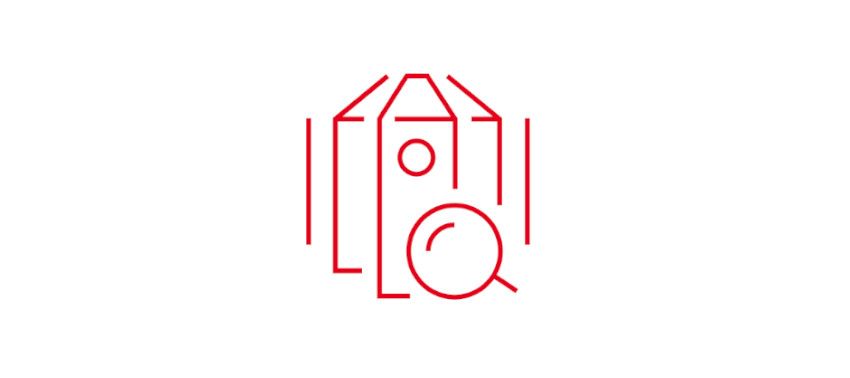The Tychem® Difference
If the risks to operatives are to be minimised, protective garments for use with aggressive industrial chemicals must not only be exceptional from a barrier perspective but also provide satisfactory levels of durability and wearability. The Tychem® portfolio of chemical protective overgarments from DuPont has been developed to shield personnel against a wide range of chemical hazards whilst closing the gaps between protection, comfort and durability.
Although chemical protective clothing should never be utilised as an alternative to reducing or eliminating a chemical exposure hazard, in many situations there is little or no choice or it is an obligatory precaution. With many industrial processes and clean-up operations it is impossible to guarantee that workers will not be subjected to accidental chemical exposure and in other cases such as accidental spillages or in decontamination work, there is always a need for continuous protection to be provided against all known, expected and possible hazards.
THE IMPORTANCE OF GETTING IT RIGHT
A number of high-performance barrier fabrics are available that have been shown to provide good levels of protection when used in chemical protective clothing. However, not all chemical-protective clothing is the same and some of these fabrics are more effective than others against different chemicals and chemical concentrations It is therefore absolutely essential that guidance and performance data is obtained from the garment manufacturers concerned. Not only do different fabrics have different protective capabilities, it must never be forgotten that no garment, and for that matter, no fabric or film, can provide absolute or indefinite protection against all chemical risks in all situations.
This makes the selection of appropriate chemical protection PPE (personal protective equipment) a complex, serious and potentially consequential exercise.
TRADE OFF
In almost every case there will be a comfort/protection trade-off to be considered when providing adequate PPE against chemical hazards and this is a matter that requires very careful attention to detail. The objective must always be to provide the optimal protection available whilst, at the same time, ensuring that the use of such protective equipment does not add any further hazards. This is because the potential for highly encapsulating and restrictive over-clothing to contribute to, or exacerbate, the dangers faced by front-line operatives is a very real, and often underestimated, danger.
High performance PPE ensembles, while providing effective chemical protection, can serve to introduce new risks relating to physiological and psychological stresses. For example the life-threatening dangers of hyperthermia ('heat stress') from unventilated protective garments are well documented. Similarly, the psychological impacts associated with wearing constrictive, bulky and sometimes claustrophobic worksuits are perhaps less well documented but every bit as real. Anything which can negatively affect the judgement of an operative in a highly dangerous, highly stressful environment must be taken very seriously.
PROTECTION WITH COMFORT
In addition to the physical and mental risks associated with uncomfortable PPE, there is also the loss of wearer productivity and a strong tendency for kit that is uncomfortable to be worn incorrectly; both crucial considerations which must be factored into the garment selection process. Taken together, all of these factors make user comfort of paramount importance when selecting apparel for resistance to aggressive chemicals and other high-risk environments. A high degree of user comfort is a particular consideration when it comes to large scale environmental clean-ups since, due to factors such as the scale of the operations, their often remote locations, their inherent unpredictability and the need for procedural adaptability, operatives might find themselves confined to a hazard zone for extended periods of time.
PROTECTION WITH DURABILITY
Another critical issue when it comes to selecting appropriate chemical-protective garments relates to fabric strength and durability. Protective suits must be selected to be strong and robust enough to withstand the rigours of reasonable use without degradation of the protection on offer. Even the best protective barriers will be rendered ineffectual if punctured, torn or abraded.
However, strength and durability are fabric characteristics which are usually at odds with user comfort and mobility. And although with some fabric types it might be theoretically possible to improve wearer comfort and dexterity by reducing fabric or coating thicknesses, this will almost certainly compromise the protection on offer and the garment's longevity in use; clearly not an acceptable compromise.
Stiff unyielding barrier membranes may comply with recognised technical norms and offer acceptable barrier performance under controlled laboratory test conditions, however they may still be unacceptable on both wearability and durability grounds. For example, hard, inflexible PE-type (polyethylene) fabrics are not only highly uncomfortable and movement-inhibiting but tend to be susceptible to flex cracking over time. Such microcracks can be very difficult to find and see and are a major cause of barrier breakdown in real-world situations.
THE Tychem® DIFFERENCE
The Tychem® portfolio of chemical protective overgarments from DuPont has been developed to shield personnel against a wide range of chemical hazards whilst closing the gaps between protection, comfort and durability. Tychem® fabrics are designed for strong, robust protection even in demanding conditions and all garments undergo rigorous, independent testing before being approved for use. Permeation-tested against a multitude of toxic solids, liquids and gases, Tychem® fabrics protect wearers from direct exposure to several hundred potentially toxic and harmful chemicals deriving from industrial, biological, military, medical and other origins.
The Tychem® 6000 F and Tychem® 2000 C garment ranges provide protection against numerous toxic substances, concentrated inorganic chemicals (even pressurised), ultrafine particulates, biohazards and chemical warfare agents. All Tychem® garment variants come with innovative design features and a full range of certified accessories. Importantly, they are designed to be tough and light with a supple, non-restrictive, ergonomic fit. In certain chemical exposure situations the new Tychem® 4000S garments may be the appropriate choice. This latest addition to the Tychem® collection carries on the protective tradition of this famous brand and adds something else: class-leading wearer comfort and mobility. Based on the renowned Tyvek® fabric from DuPont which provides effective, lightweight protection to countless operatives around the world, the new Tychem® 4000S fabric is considerably softer and lighter than the elastomeric-based materials typically found in competitor garments. With an average garment weight of just 700 grams, the inherent pliancy and dimensional stability of the groundbreaking Tychem® 4000S fabric makes it much more comfortable and easy to wear in the stressful conditions that operatives can typically face when working in hazardous environments.
SUMMARY
While providing necessary protection to the user, the wearing of PPE (personal protective equipment) for chemical protection invariably creates a major impediment to worker performance, communications and comfort. In a large number of cases the provision of higher-level personal protection comes at a high cost in terms of operator comfort and efficiency and, unless carefully managed, these are conflicts that can lead to field operators being exposed to further risks and for a tendency for otherwise effective workwear to be shunned, used incorrectly or unofficially modified.
The Tychem® family of protective apparel from DuPont provides chemical protection that is CE certified up to category III, type 3-B, 4, 5 and 6 while being light, supple and both tear- and abrasion-resistant. When selecting protective workwear, PPE specifiers must always remember that an uncomfortable operator is an unhappy operator and an unhappy operator is an unproductive, and quite possibly unsafe, operator.
---------------------------------------------------------------------------------------------------------------------------------------------------------------------------
HAVE YOU GOT ALL THE ANSWERS OR DO YOU NEED HELP?
When it comes to selecting personal protection against aggressive industrial chemicals, specifiers must be aware of the fact that protective clothing is a final line of defence against direct physical contact with chemical substances that can be highly dangerous. Because of this, great care must be exercised in choosing the optimum protective garments.
Just because a garment is recorded as having 'passed' a static test under controlled laboratory conditions doesn't necessarily mean that it is appropriate for a given work situation. Individual operating conditions can vary enormously and each circumstance or event must be considered on its own merits to permit the optimum consideration of risk, protection, durability and comfort. Don't simply rely on choosing protective coveralls (or any other PPE) from a web-site or a piece of literature. The optimum and safest choice of personal protection requires sound judgement, a detailed understanding of risk and a comprehensive knowledge of personal protection principles, technical standards and equipment performance.
GET THE ANSWERS NOW - GET PROFESSIONAL ADVICE
A global leader in personal protection, Dupont has been addressing the world’s safety needs with the best in technologies and innovations for over 40 years. DuPont Personal Protection offers comprehensive support in protective garment selection and chemical risk assessment as well as training on the use of protective clothing. A customised selection service is available for all Tyvek® and Tychem® protective clothing products.


